Soft, highly absorbent, and quick-to-dry flour sack towels have helped people around the world with their household chores, not just now but since the 1800s. Back then, staples like grains and flour used to be wrapped up in tightly woven sacks made of cotton.
Over time, people got more creative with these versatile dish towels, using them during cooking, cleaning, quilting, stitching, and much more.
Read on to learn more about what flour sack towels are used for.
Table of Contents
- What are Flour Sack Towels?
- Where to Buy Flour Sack Towels?
- 15 Ways to Use Flour Sack Towels in Everyday Life
- 1. Swift Household Cleaning
- 2. A Great Cheesecloth Alternative
- 3. For Frizz-Free Hair-Drying
- 4. To Make Pillow Covers
- 5. As a Cloth Diaper
- 6. To Make Reusable Bags
- 7. To Polish Cutlery and Silverware
- 8. To Create DIY Art
- 9. To Keep Bread Fresh and Warm
- 10. For Storing and Drying Herbs
- 11. To Make Kids’ Clothing
- 12. As a Stain Remover
- 13. For Wrapping Gifts and Lining Baskets
- 14. As a Cold Compress
- 15. As a Handkerchief
- How to Wash Flour Sack Towels
- Final Thoughts
What are Flour Sack Towels
One of the most frequent questions we get asked are what are flour sack towels and are the same as kitchen towels?
Kitchen towels come in all sorts of shapes, sizes, and materials, each with its own pros and cons.
A flour sack towel, also known as a tea towel, is a type of kitchen towel typically woven from pure cotton or linen and can stand up to any task. It’s called a “sack” towel, but pieces or sheets of fabric are cut into rectangular or square shapes.
Related Article: What are tea towels?
A true workhorse for not only your kitchen but your entire living space, here are some of the qualities that make these such an all-rounder in the kitchen towel game.
-
Reusable and Washable: Flour sack towels trump paper kitchen towels because of their reusability. The finest variety in the market is often made from 100% organic cotton. Free of chemicals, these are safe to use around food and super easy to wash, dry, and reuse hassle-free.
-
Soft and thin: These tend to be thinner than your standard kitchen towel but thicker and finer than cheesecloth. Linen flour sack towels are durable and known for getting softer with every wash, making them perfect for polishing silverware or drying your precious china without damaging it.
-
Lint-Free: As they are made from thinly woven cotton, flour sacks don’t produce lint and fuzz, no matter how furiously you wipe. You won’t find these fraying or leaving threads behind on your crockery, glasses, kitchen counter, or windows.
- Absorbent and Quick-Drying: Thin cotton or linen fabric with a loose weave makes flour sack towels super absorbent and quick to dry. Use them for a variety of chores, from drying greens to dishes.
Where to Buy Flour Sack Towels
We sell 100% organic cotton flour sack towels in pure white as well as unbleached natural cotton. You can also buy our organic cotton flour sack towels on Amazon.
15 Ways to Use Flour Sack Towels in Everyday Life
If you’re wondering what flour sack towels are used for. Here are 15 fantastic benefits of owning these highly-functional kitchen towels.
1. Swift Household Cleaning
The highly absorbent and lint-free nature of flour sack towels makes them a crowd favorite to clean up any mess.
Use them to wipe and dry dishes, counters, clean windows, or whatever you need.
Keeping these towels in excellent condition is just as easy.
Once you’re done with your cleaning chores, wash these by hand or toss them in the washer on a delicate cycle and air dry.
2. A Great Cheesecloth Alternative
While flour sack towels are a tad thicker with a finer weave as compared to cotton cheesecloth, the two are often used as each other’s substitutes. The tight weave allows juices to pass through while retaining the solid bits.
If you want to use flour sack towels to strain stocks and cheese, we recommend using the eco-friendly and toxic-free organic cotton variety.
Related Article: 15 Cheesecloth Alternatives You Can Easily Find in Your Home
3. For Frizz-Free Hair-Drying
Is your hair curly or prone to frizz? Good news for you! Adding a flour sack towel to the hair care routine can do wonders for your hair texture.
After a shower, use flour sack towels to plop, plunk, and scrunch excess moisture without over-drying them.
4. To Make Pillow Covers
We love how versatile these towels are! Their ultra-thin surface makes them great for an array of DIY crafts.
We’ve seen people stitch and quilt to transform them into gorgeous pillow covers, curtains, and aprons.
One of the quickest ways to make a pillow cover is by folding the towel in half and then stitching the sides to form a pocket. You then turn the pocket outwards, fill it up with fiber, and finally sew the remaining edges. It’s that easy!
5. As a Cloth Diaper
You read it right! Flour sack towels do what no other kitchen towel can - double up as a baby diaper.
They are soft, delicate, and absorbent. We recommend using a thicker variant to fold into a diaper.
Even better if it’s made from pure organic hypoallergenic cotton.
6. To Make Reusable Bags
If you can’t get your hands on reusable produce bags, you can use your flour sack towels to make some. It’s an eco-friendly move, and the planet will thank you for it.
Get creative while decking it up. Use fabric paints to create eye-catching patterns and designs with your favorite pop of color.
Besides grocery bags, a flour sack bag can also be used as an amazing canvas lunch tote that can be personalized to express your style.
7. To Polish Cutlery and Silverware
Don’t use just any dishcloth to polish your silverware and china.
Instead, use these soft, delicate sack towels to get the work done without harming your treasured goods.
They’ll look brand new without any traces of lint, watermarks, or fuzz!
8. To Create DIY Art
If you’re one for the arts, let a spare flour sack towel be your new blank canvas.
Turn it into embroidered artwork with detailed patterns, as was done by people during the Great Depression when buying a luxury or fancy item was next to impossible.
In fact, the legendary artist, Vincent Van Gogh, used tea towels as a canvas substitute when art supplies were low.
9. To Keep Bread Fresh and Warm
Historically this is what a flour sack towel was mainly used for, to keep bread loaves and dinner rolls oven-fresh.
Even during baking, you can use these thin tea towels as bread proofing towels to cover the dough to keep it warm and moisture-free during rising.
Related Article: How to Store Bread? 10 Bread Storage Ideas.
10. For Storing and Drying Herbs
Keep flour sack towels handy while working with fresh herbs. Spread these absorbent, lint-free towels and lay washed herbs on top to air dry them.
If you leave the towels slightly damp, they will preserve your herbs and keep them aromatic for a long time.
You can also cut small pieces of sack towels and sew them into pouches to bundle up herbs for therapeutic use.
11. To Make Kids’ Clothing
The Great Depression was when people found many new ways to make the best of what they had, flour sack towels included.
Clothing such as dresses, skirts, and tops for women and kids were quite the rage back then as more of an essential requirement than style.
Now, most flour sack towels come neatly hemmed. If you have some extra ones lying around, you can design and create beautiful clothing for your kids.
As a parent, you may also be looking for making some sustainable choices for your kids. We’ve zeroed down on a curated list of 20 eco-friendly baby products that are perfect to add to your registry.
12. As a Stain Remover
Unbleached flour sack towels are great for getting rid of stains from carpets, rugs, and clothes.
Prep a 3:1 water to vinegar concoction and spritz it directly onto the stain. Now lay your sack towel over it, place a mildly heated iron on it, and watch the stain get soaked up by the towel in a jiffy.
You can also remove stains on your kitchen or bathroom sink by using a damp flour sack towel with powdered cleaner.
13. For Wrapping Gifts and Lining Baskets
When you go berry picking, use a basket lined with a flour sack towel to stop the small fruit from escaping through the gaps or getting squished in the basket.
Flour sack towels make great basket liners, in general. Whether you’re gifting baked goods or spa items, line the baskets with beautifully painted or printed flour sack towels to put a wide smile across your buddy’s face.
You can also make nice cloth gift bags using these flour sack towels.
14. As a Cold Compress
One of the lesser-known ways to put a flour sack to good use is using it as a cold compress. Simply wrap a few cubes of ice in it and secure it with a rubber band or thread.
You can also use it to make a DIY castor oil pack. To make a castor oil pack, you need an unbleached cloth that can soak up plenty of liquid, and absorbency is where these towels shine! Dip the flour sack towel in castor oil and use it as advised by your practitioner.
15. As a Handkerchief
Because they are absorbent and fast-drying, flour sack towels work brilliantly as cotton or linen handkerchiefs. But since these towels are usually larger than an average handkerchief, you’ll need to trim them into pocket-friendly dimensions. It wouldn’t hurt to decorate it a bit too. Let your imagination run wild!
These towels can sometimes clutter your kitchen. Explore these15 kitchen towel holder ideas to show off your kitchen with flair.
How to Wash Flour Sack Towels
Flour sack kitchen towels are absolutely no-fuss when it comes to maintenance. Now that you know all about what flour sack towels are used for, here are a few tips and pointers that’ll be helpful to keep them new and dandy for longer.
- When you get a new flour sack towel, washing it once before putting it to use is a great idea. It’ll just amp up its soaking powers and make it softer.
- After you’re done using the towel, wash by hand or a washer, preferably on a gentle cycle without bleach or softeners. Bleaching agents might harm the thin natural fibers of a flour sack towel.
- If your flour sack towel smells bad, you can tackle the odor with baking soda-vinegar mix.
- Air drying instead of tumble drying will keep them in a top-notch state for a long, long time.
Final Thoughts
We’ve listed 15 of them here, but frankly, there are infinite ways to use flour sack towels. If you haven’t owned these till now, we hope our blog changed your mind.
From cleaning to drying your hair to gracing your picnic basket, flour sack towels being one of the best eco-friendly kitchen products are endlessly versatile, and it’s always a good idea to have a pack of these around.

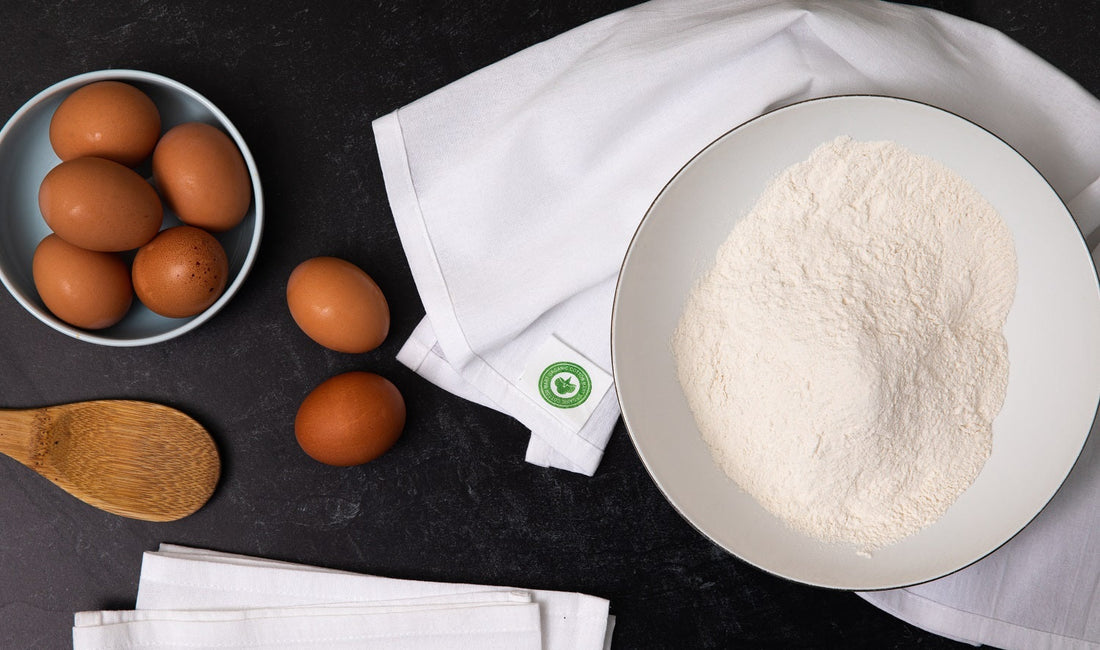
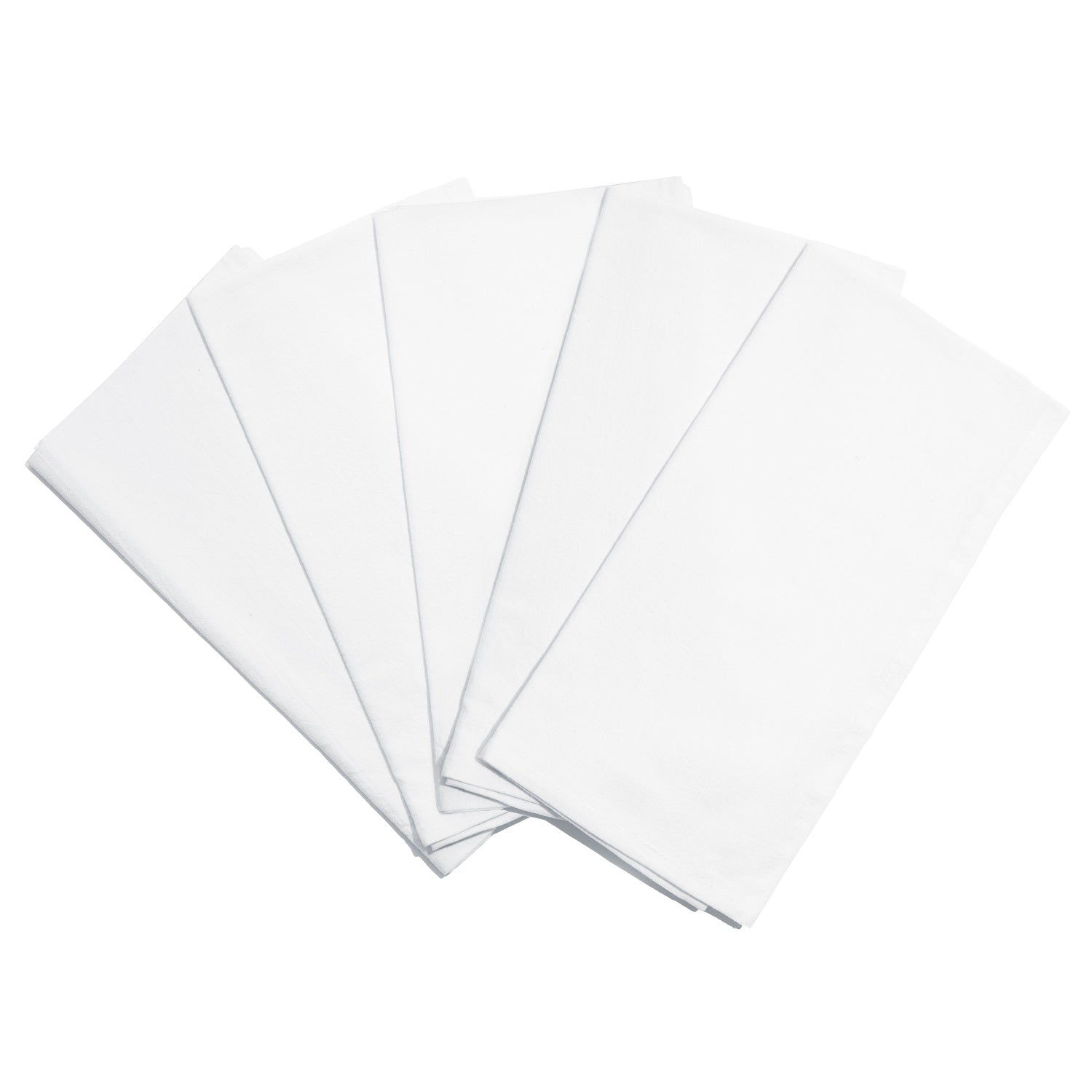
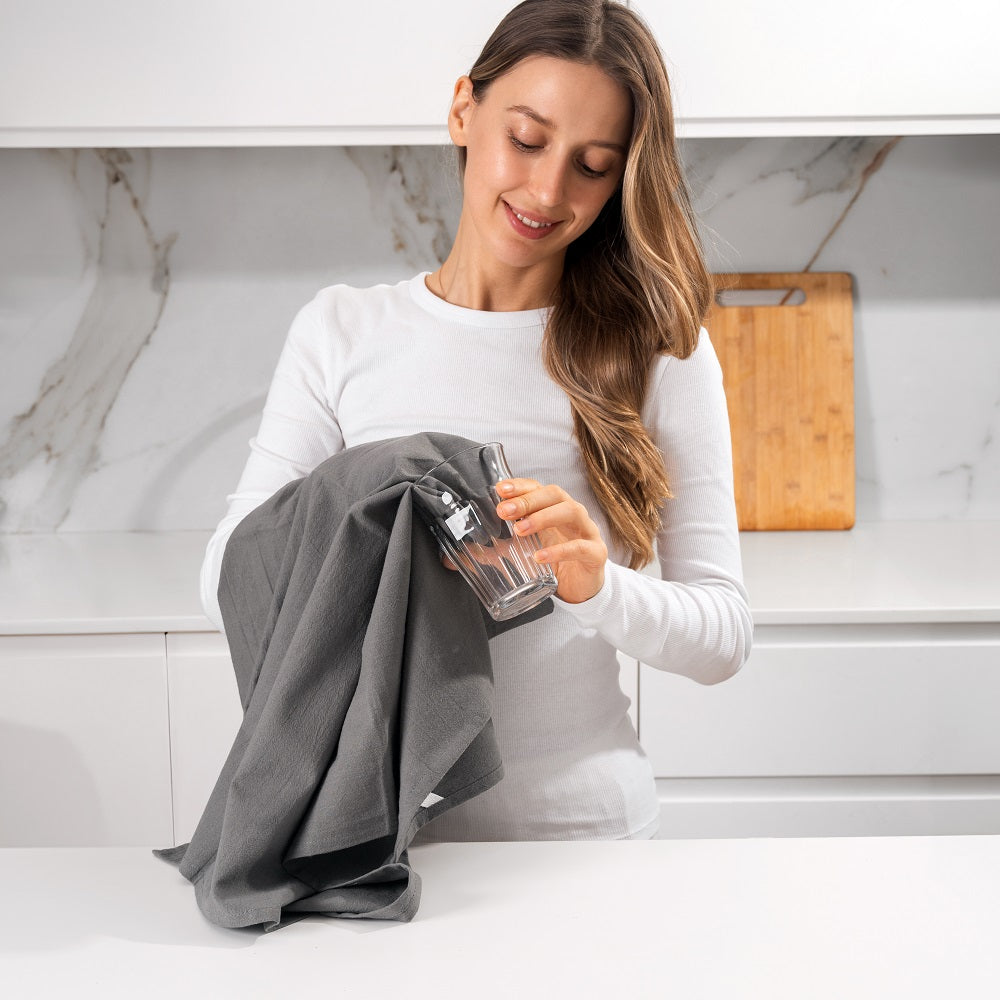
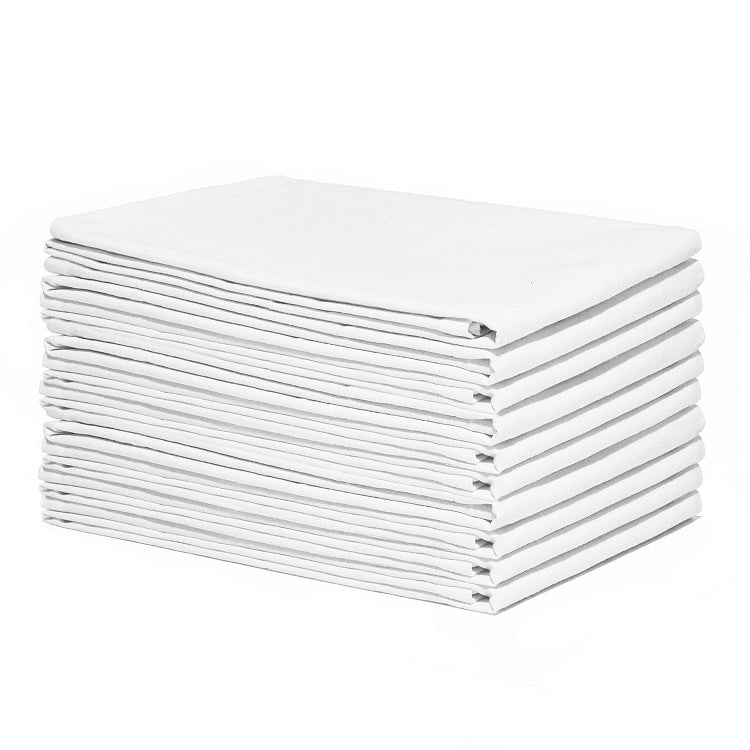
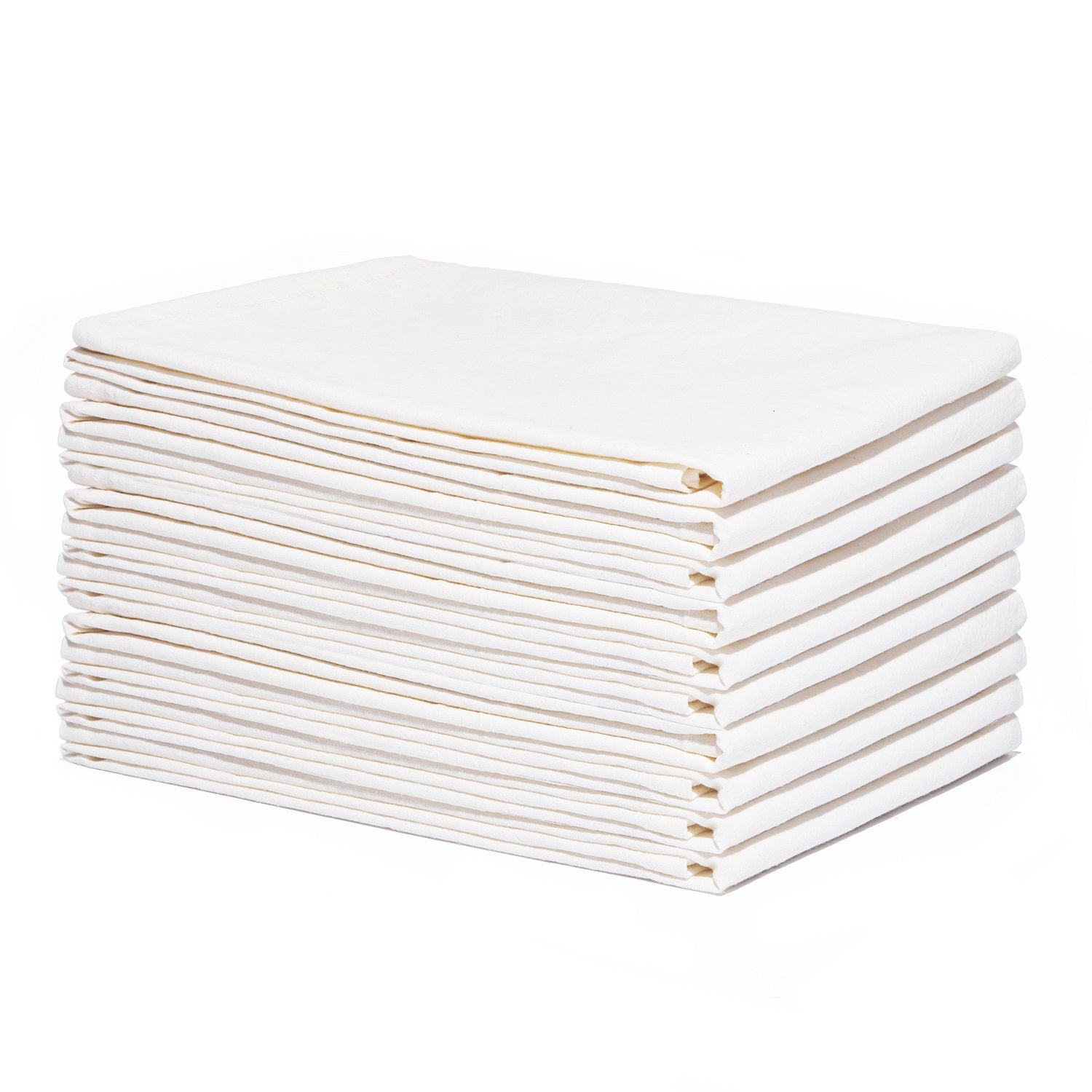
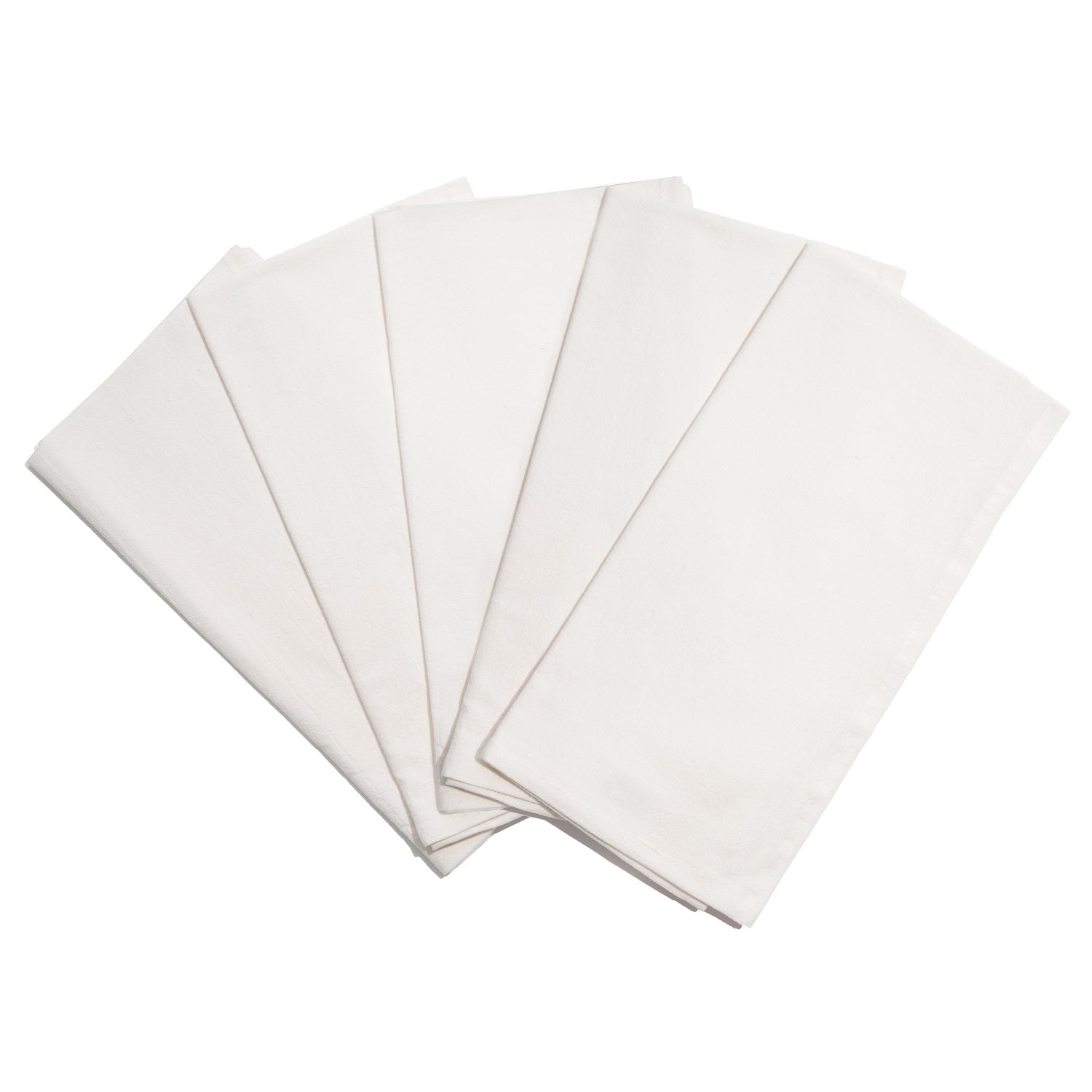
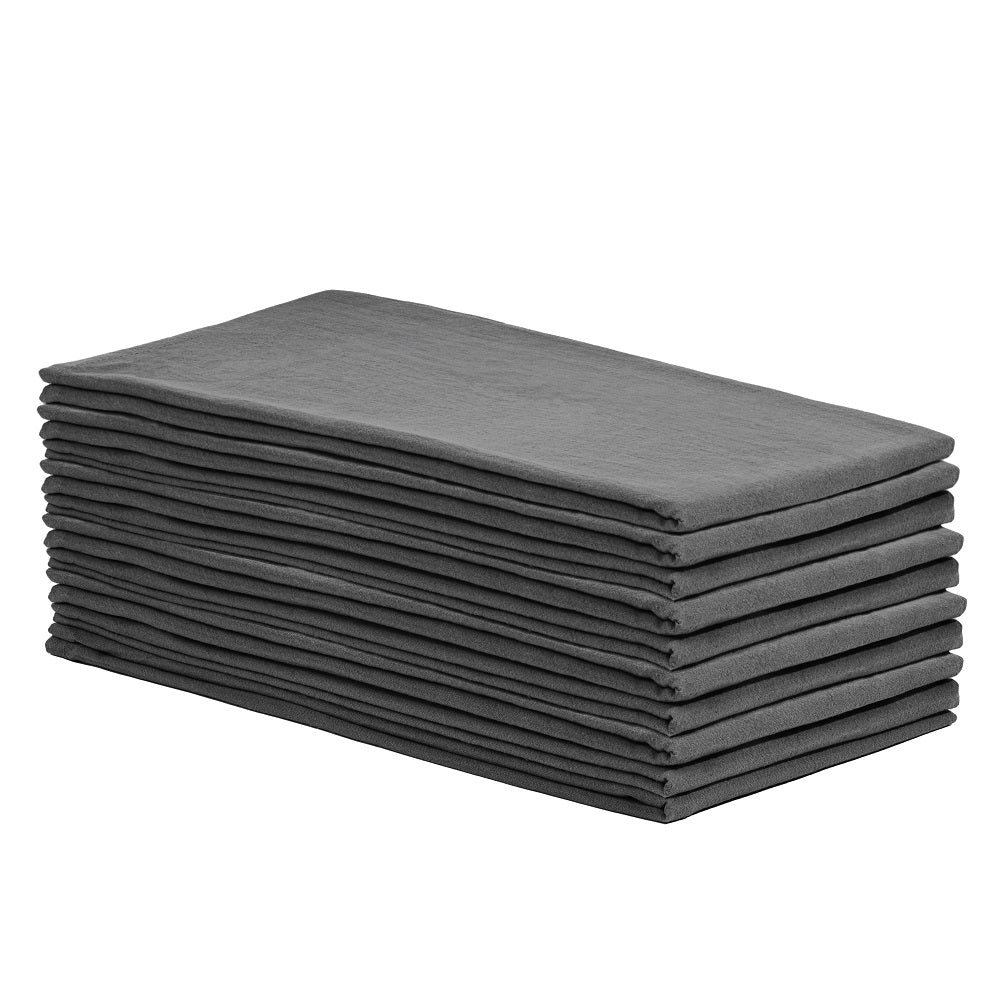
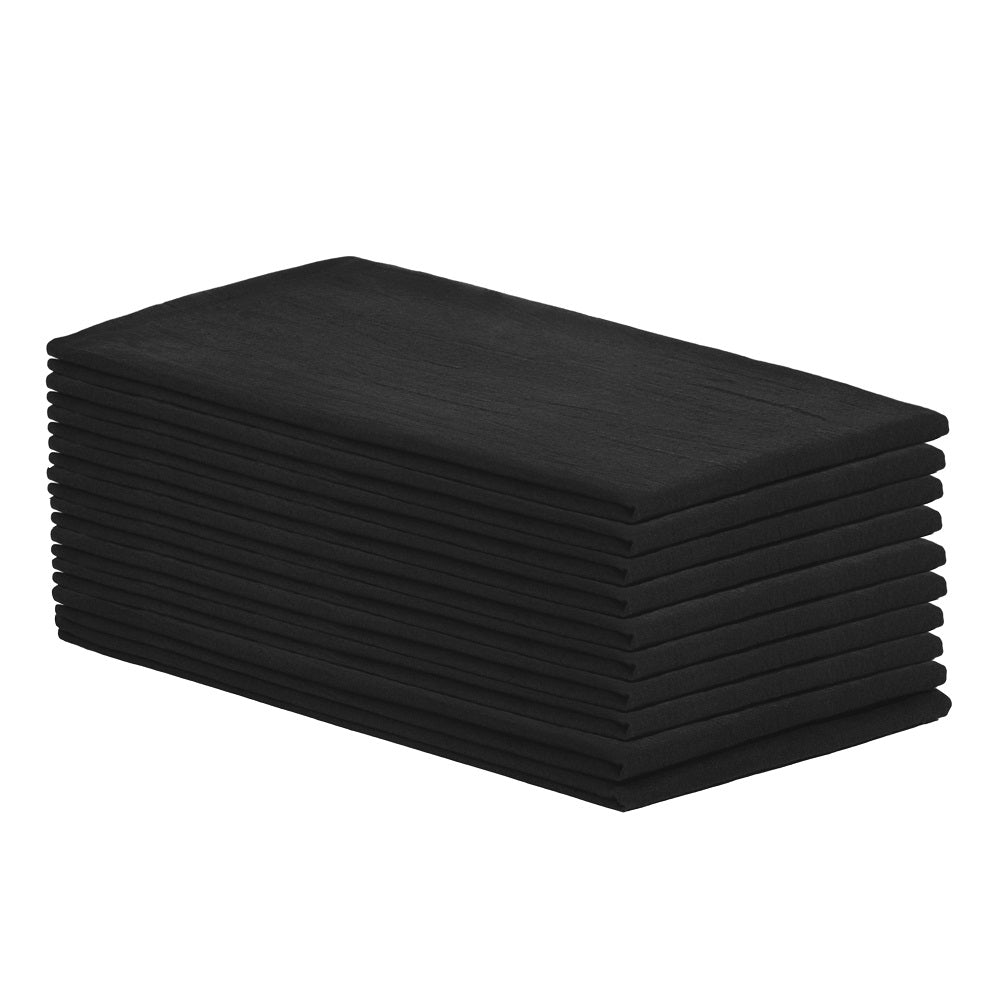
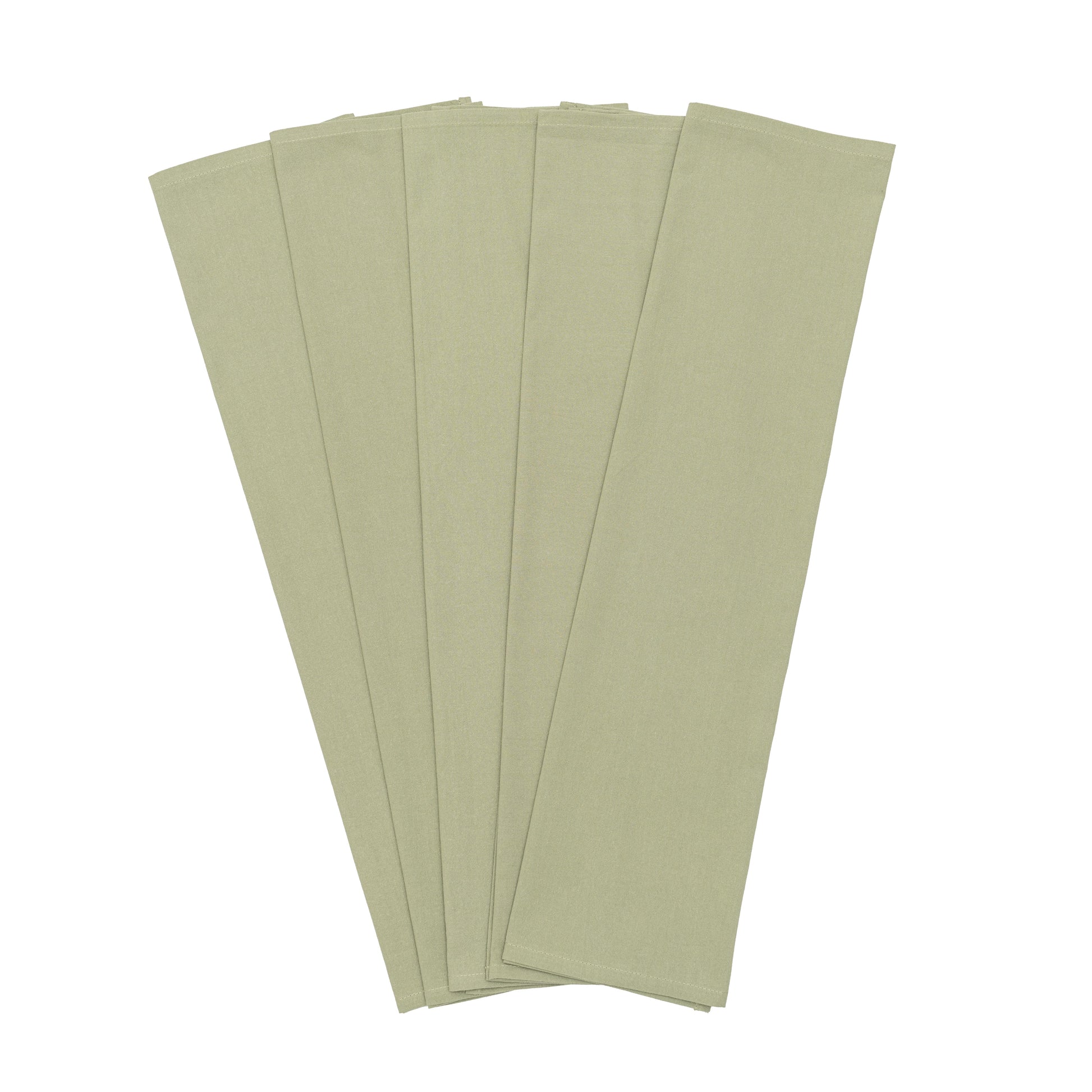
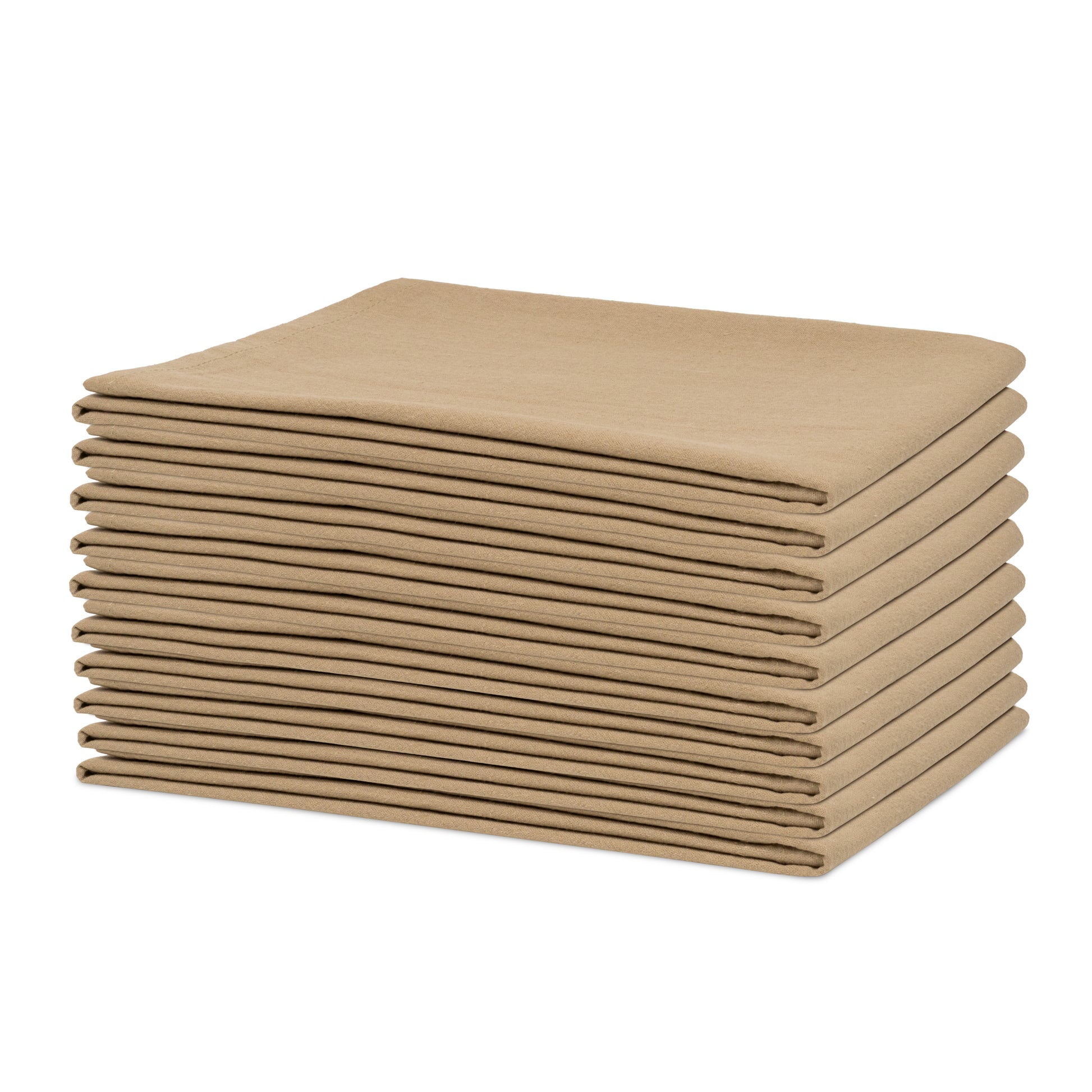
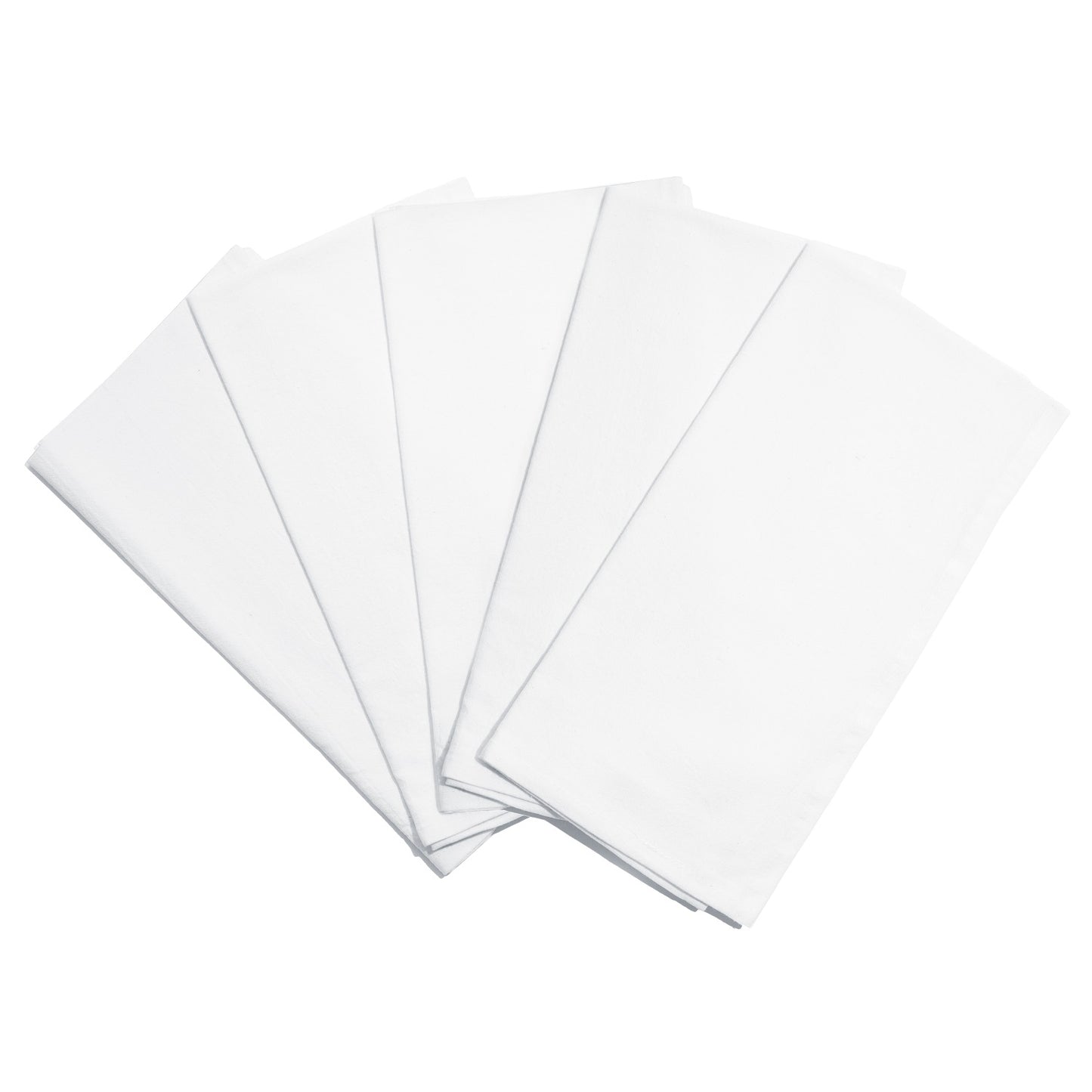
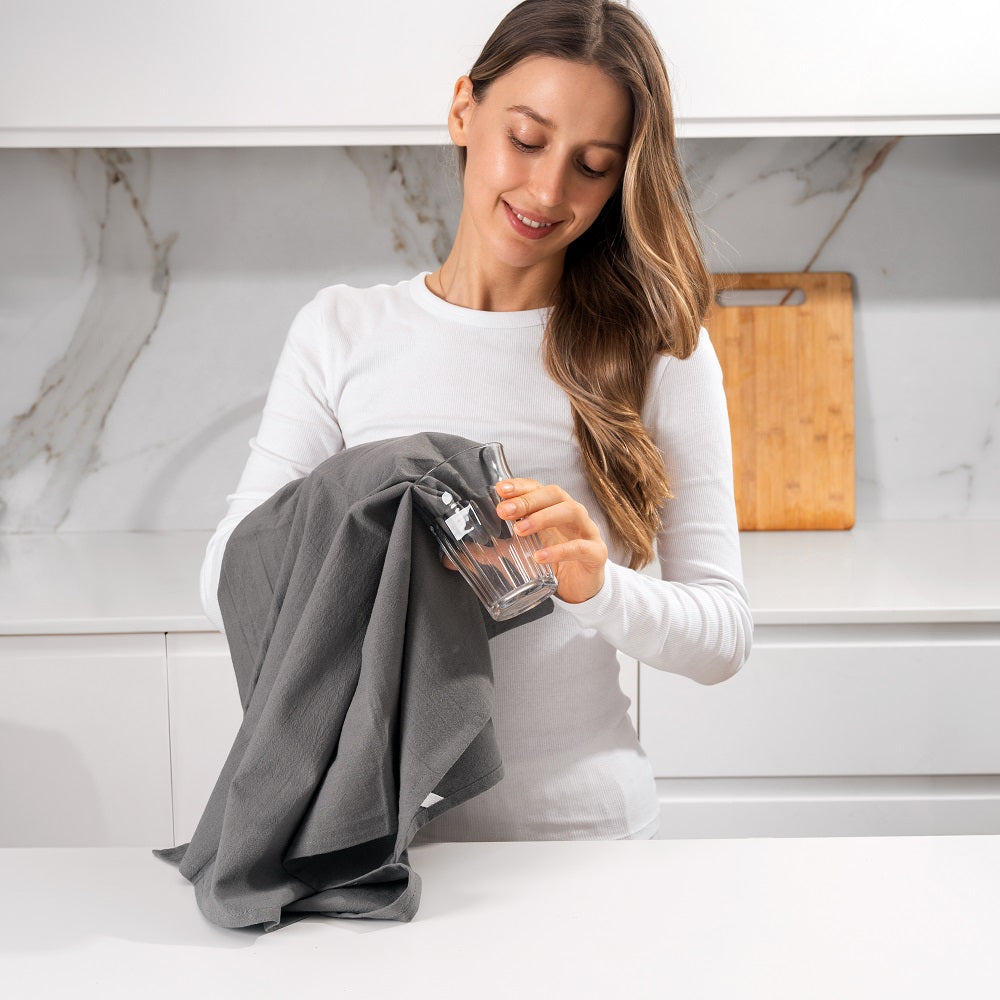
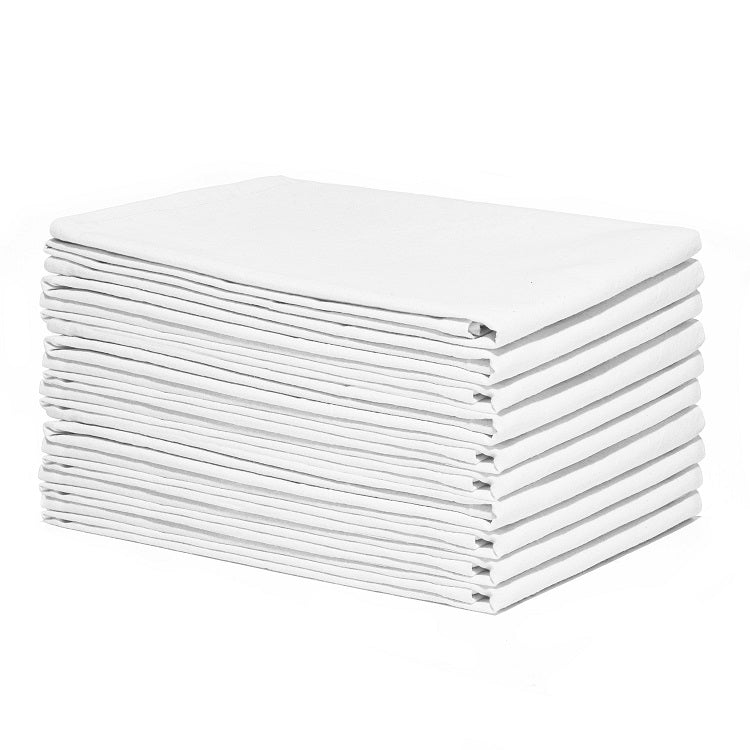
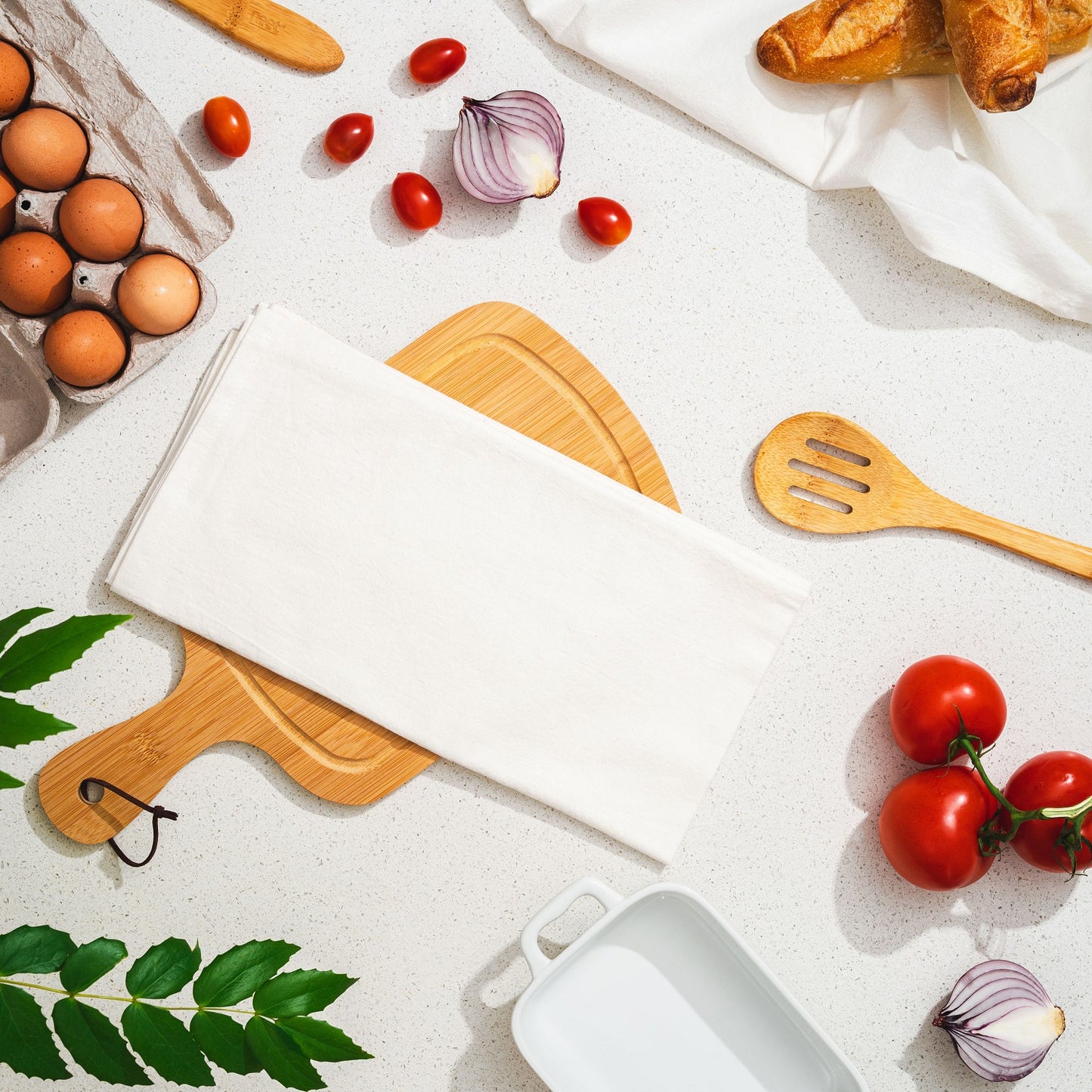
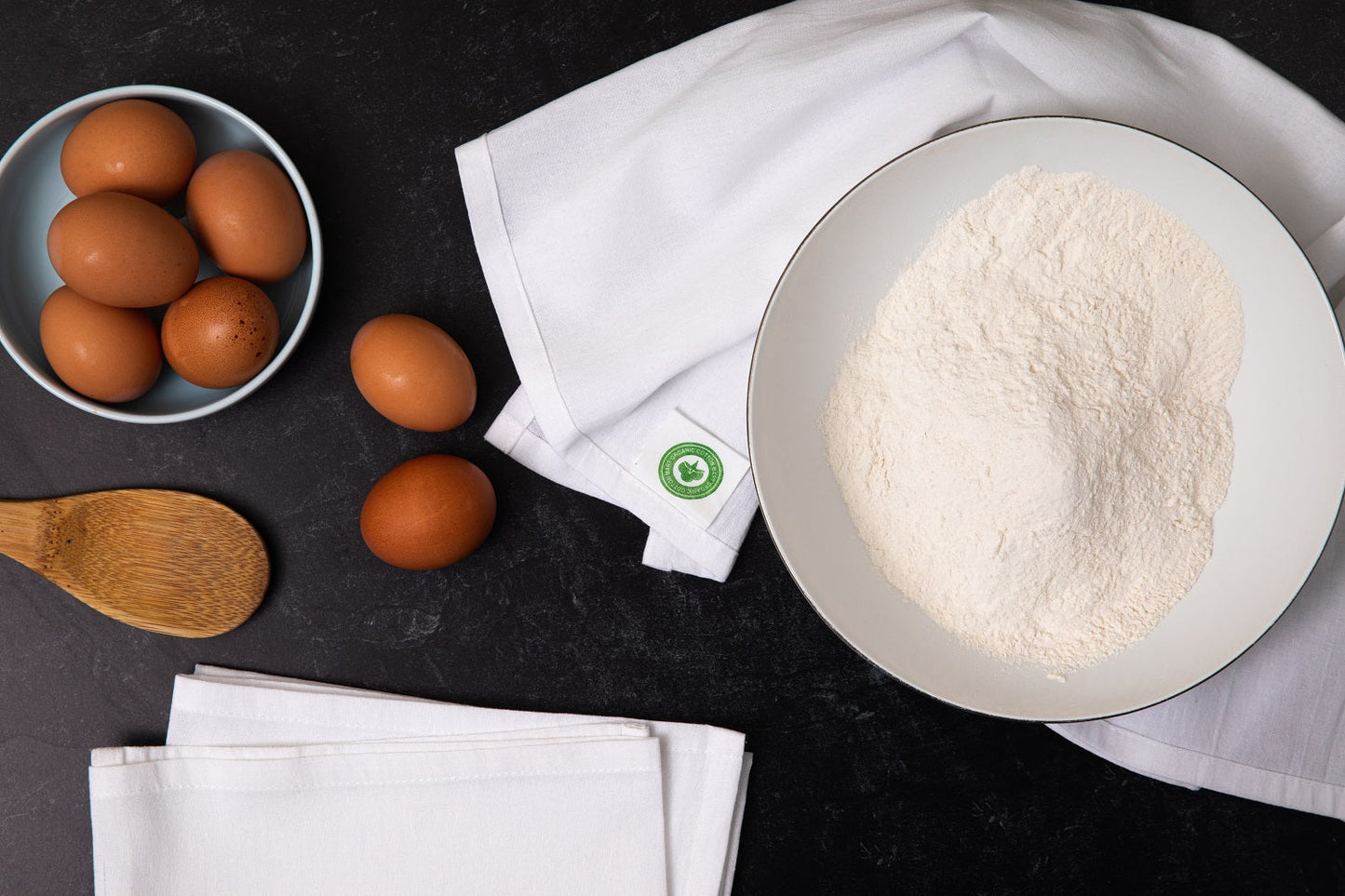
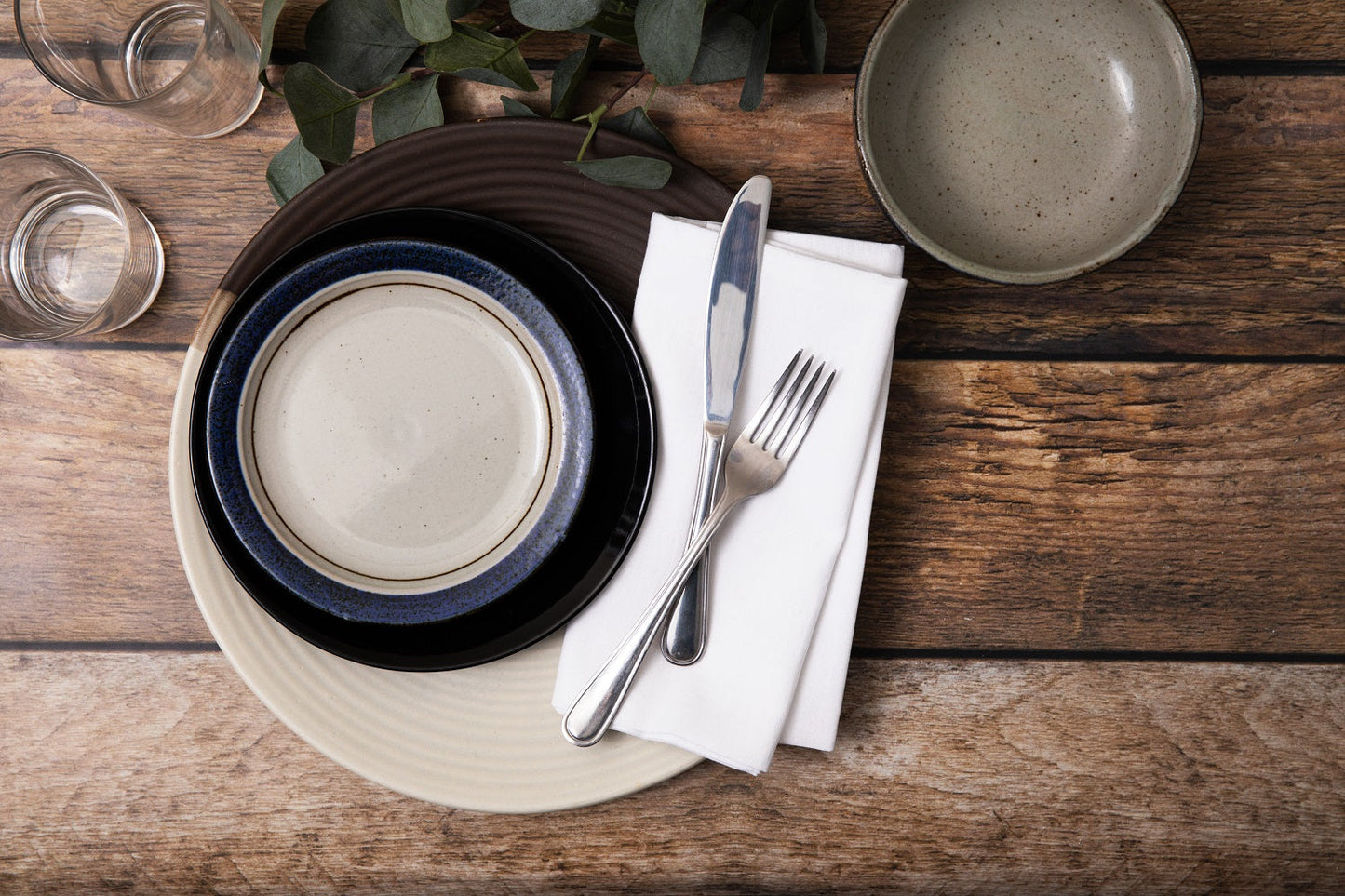
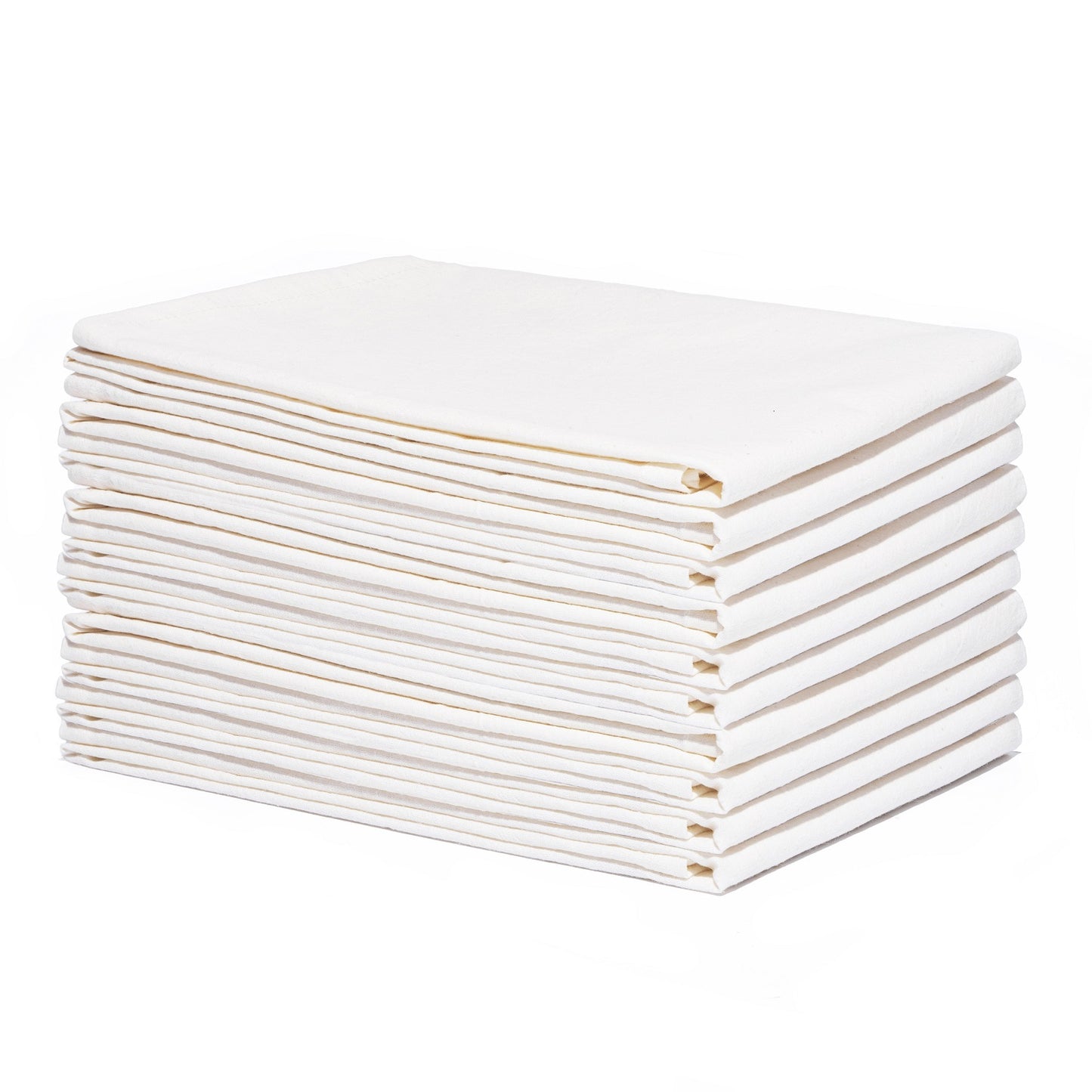
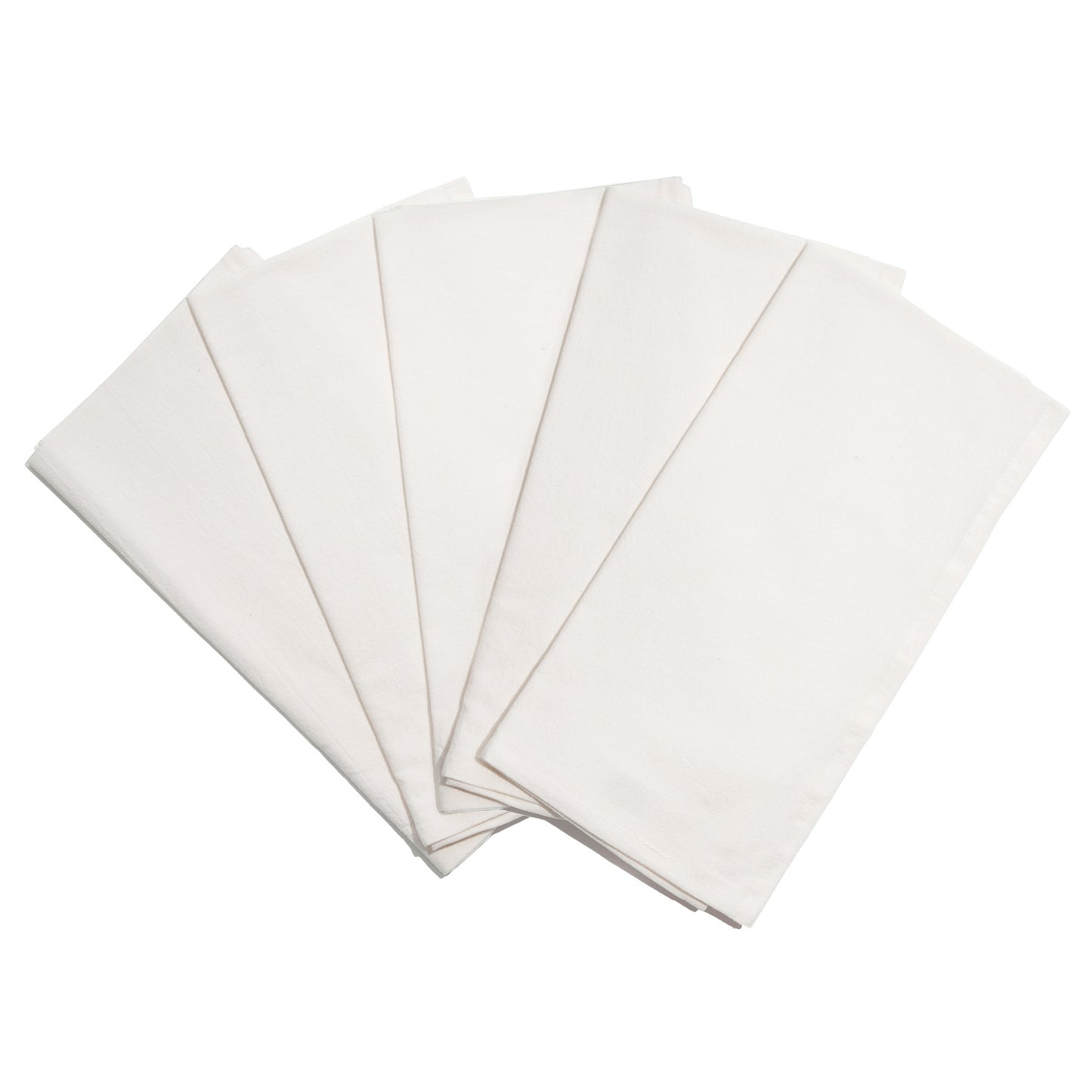
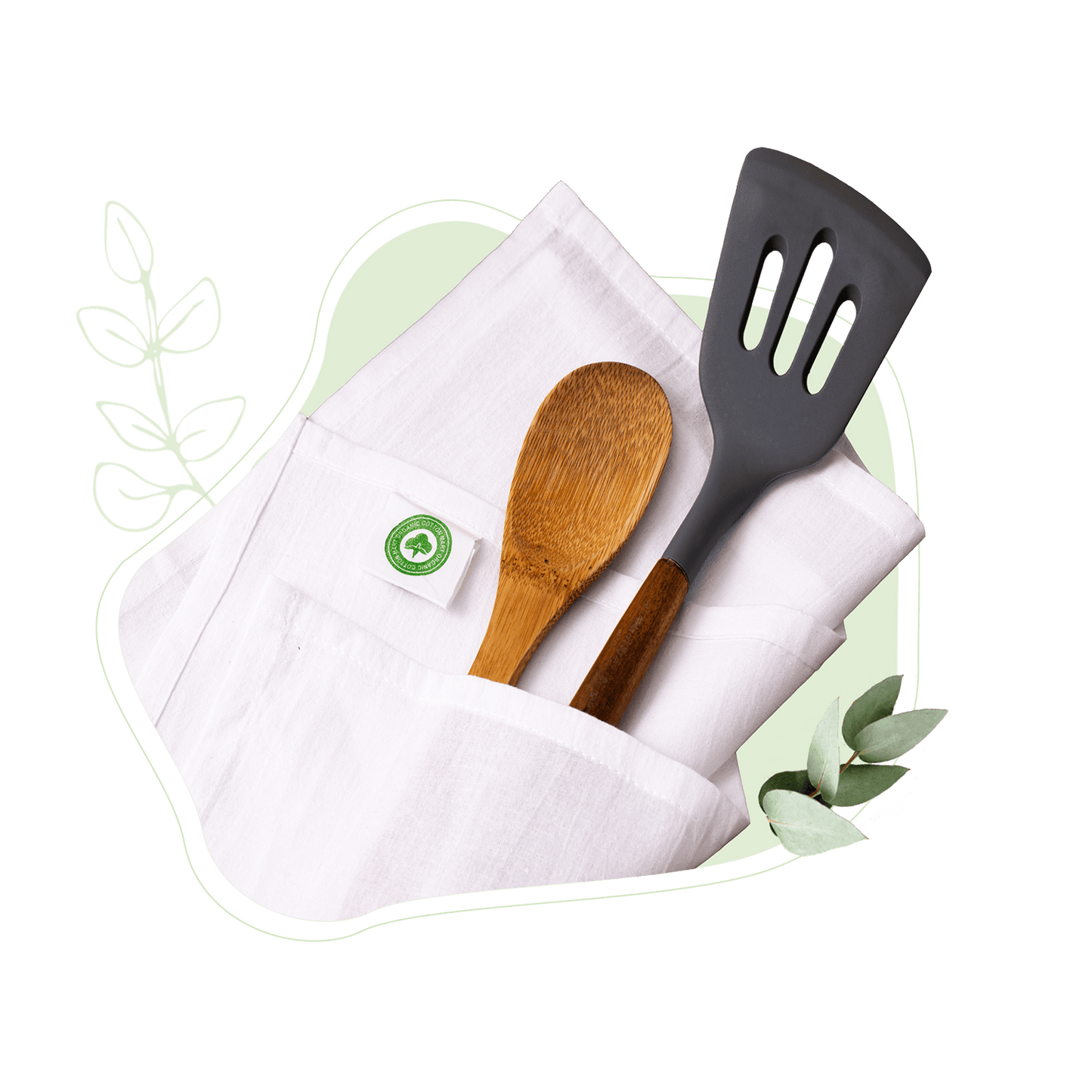
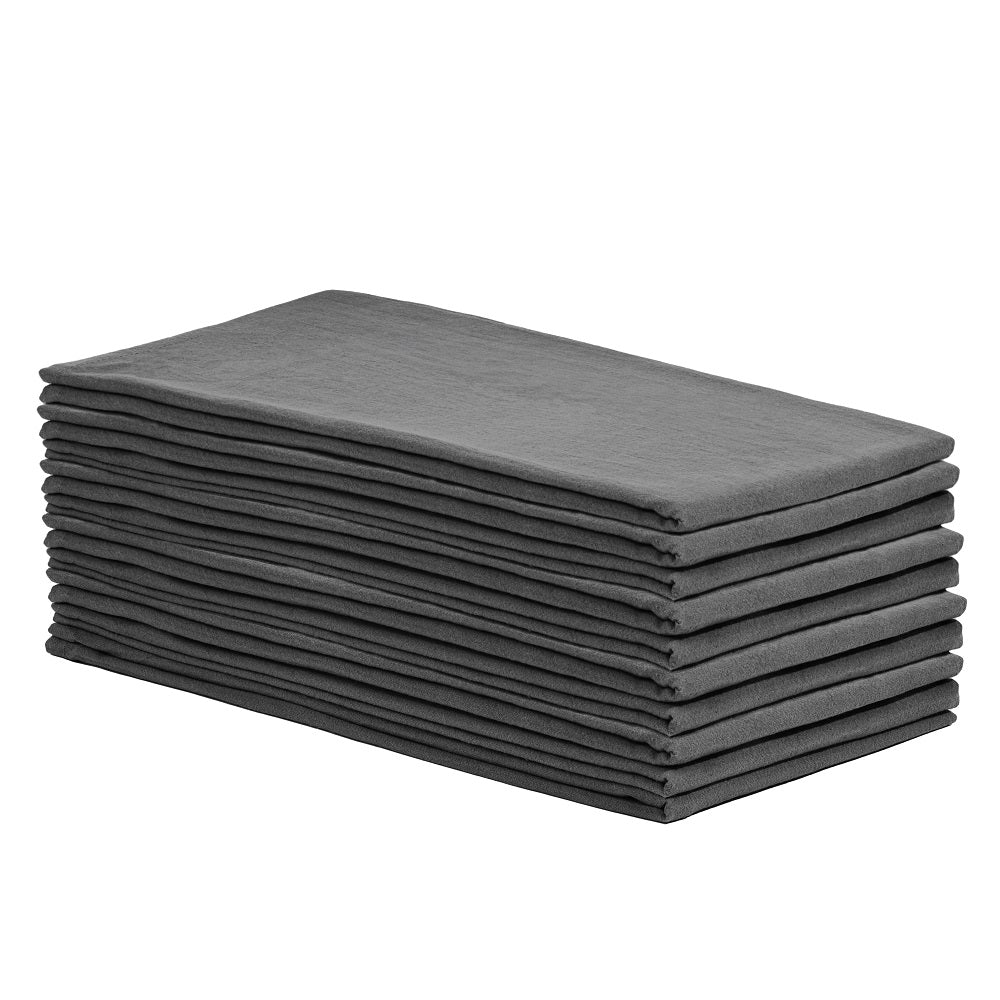
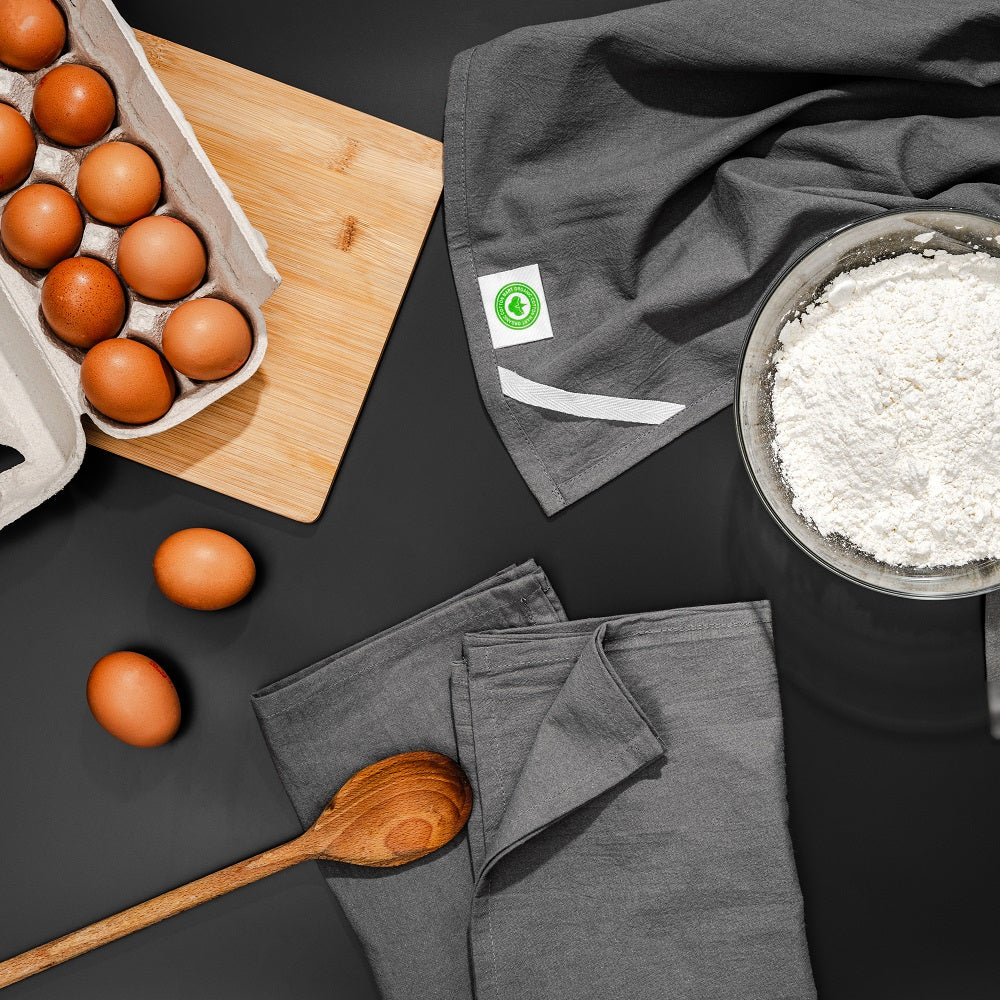
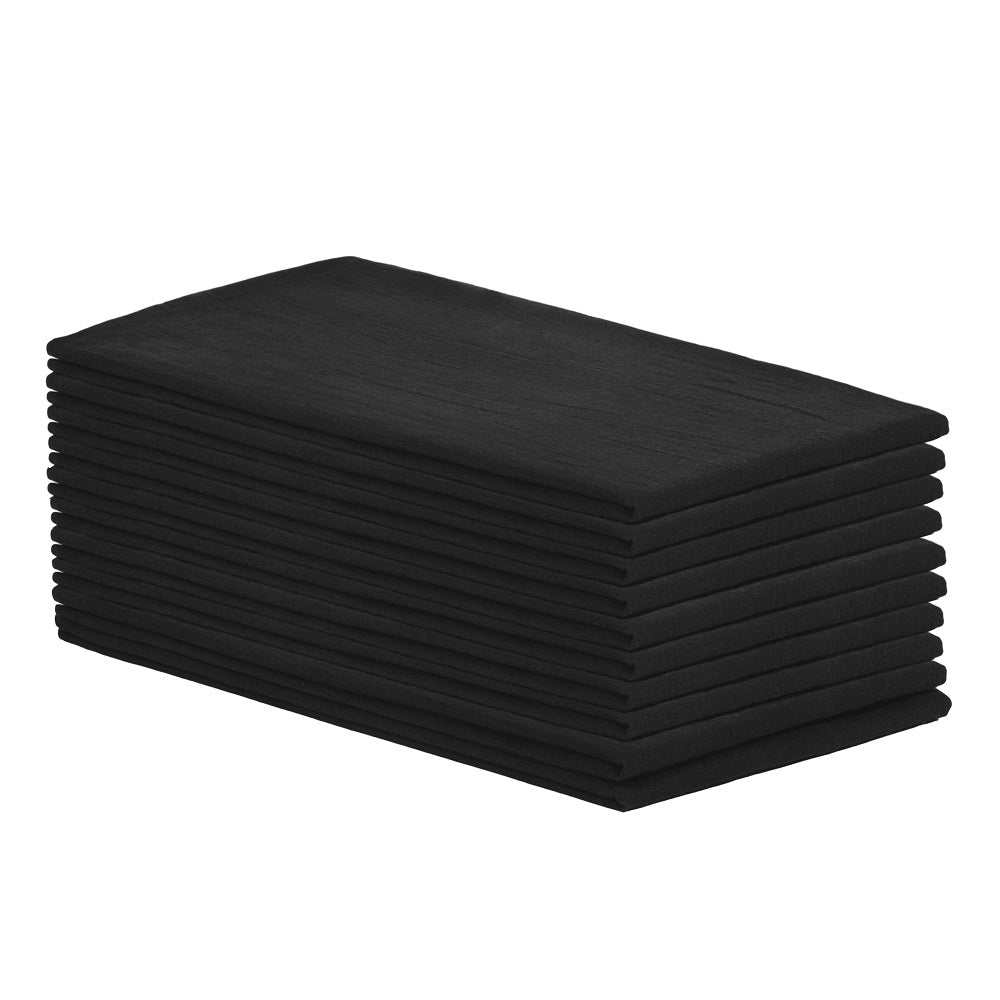
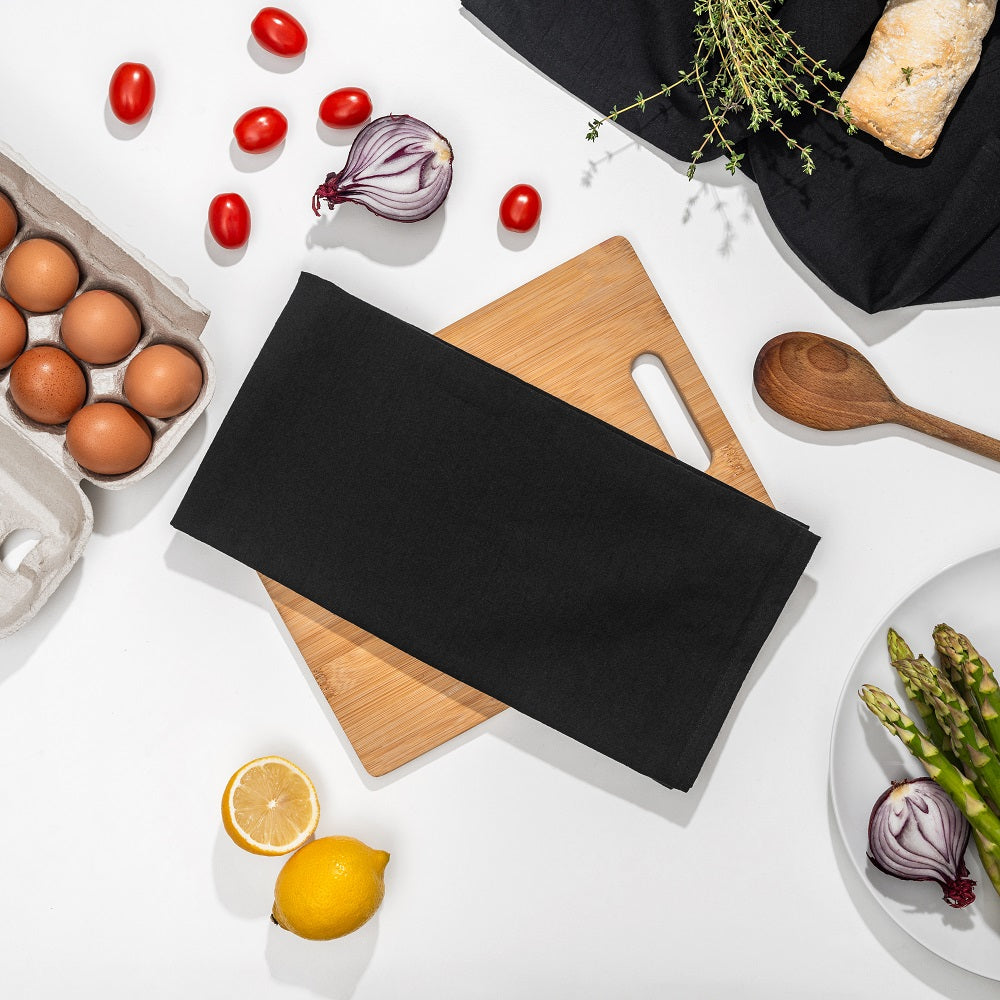
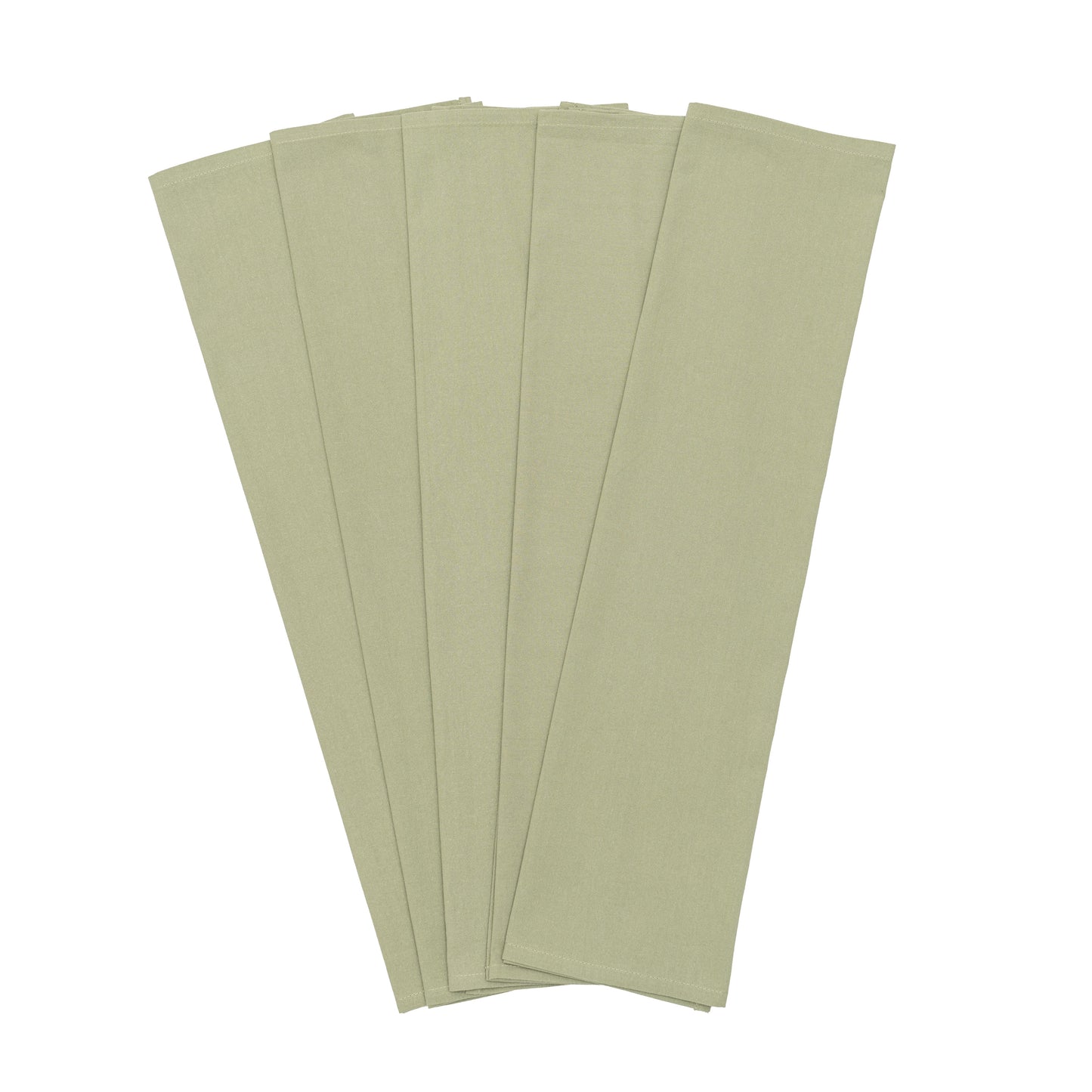
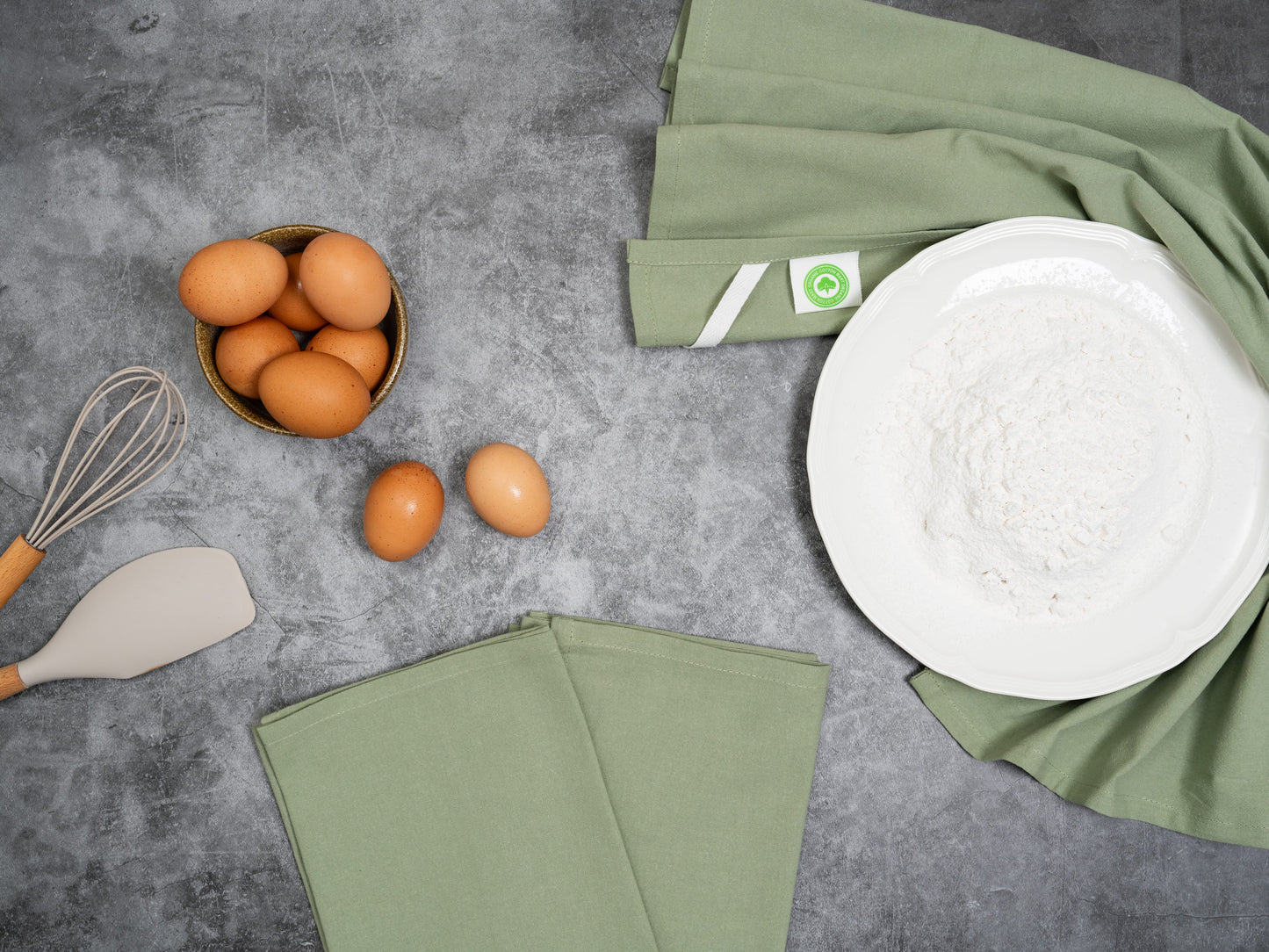
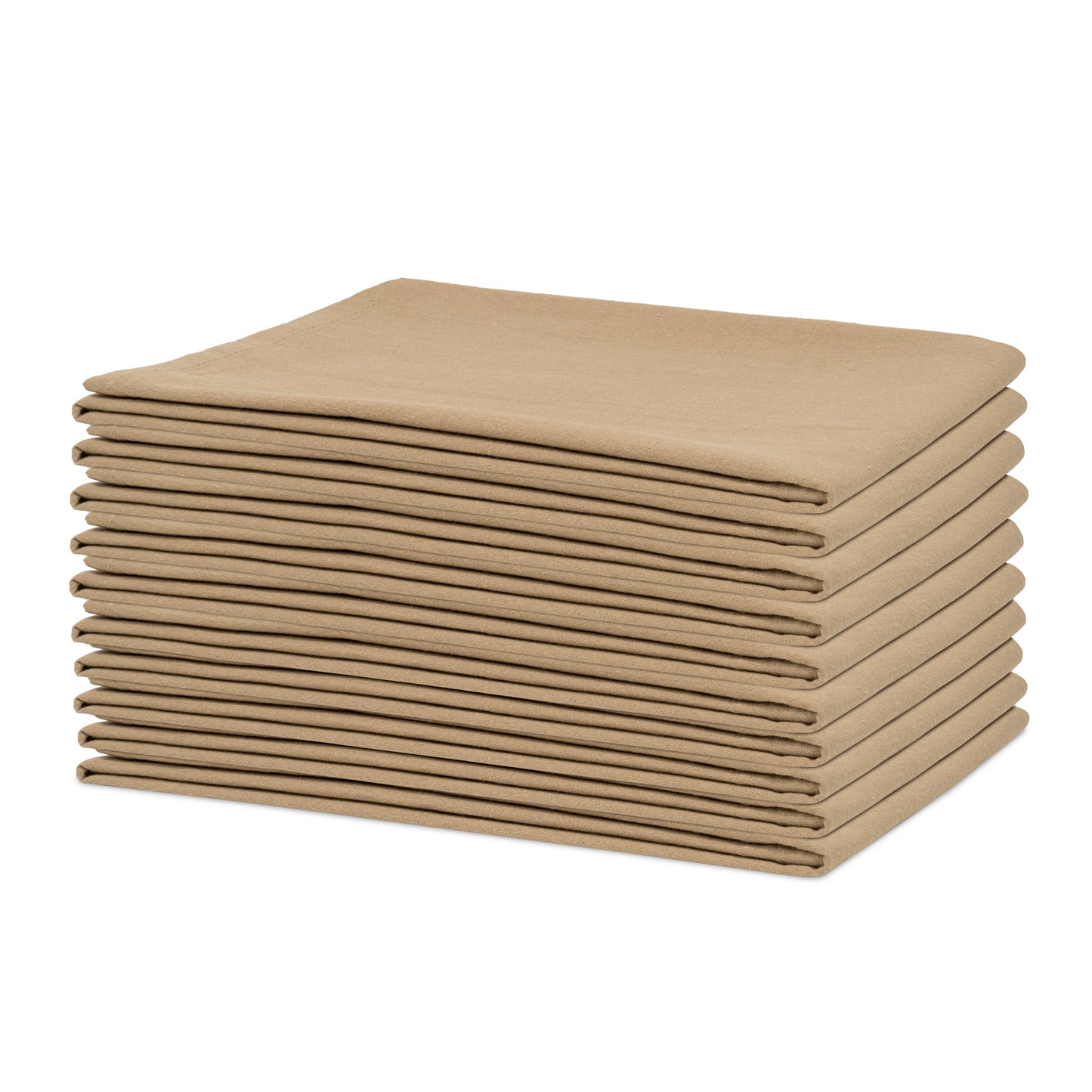
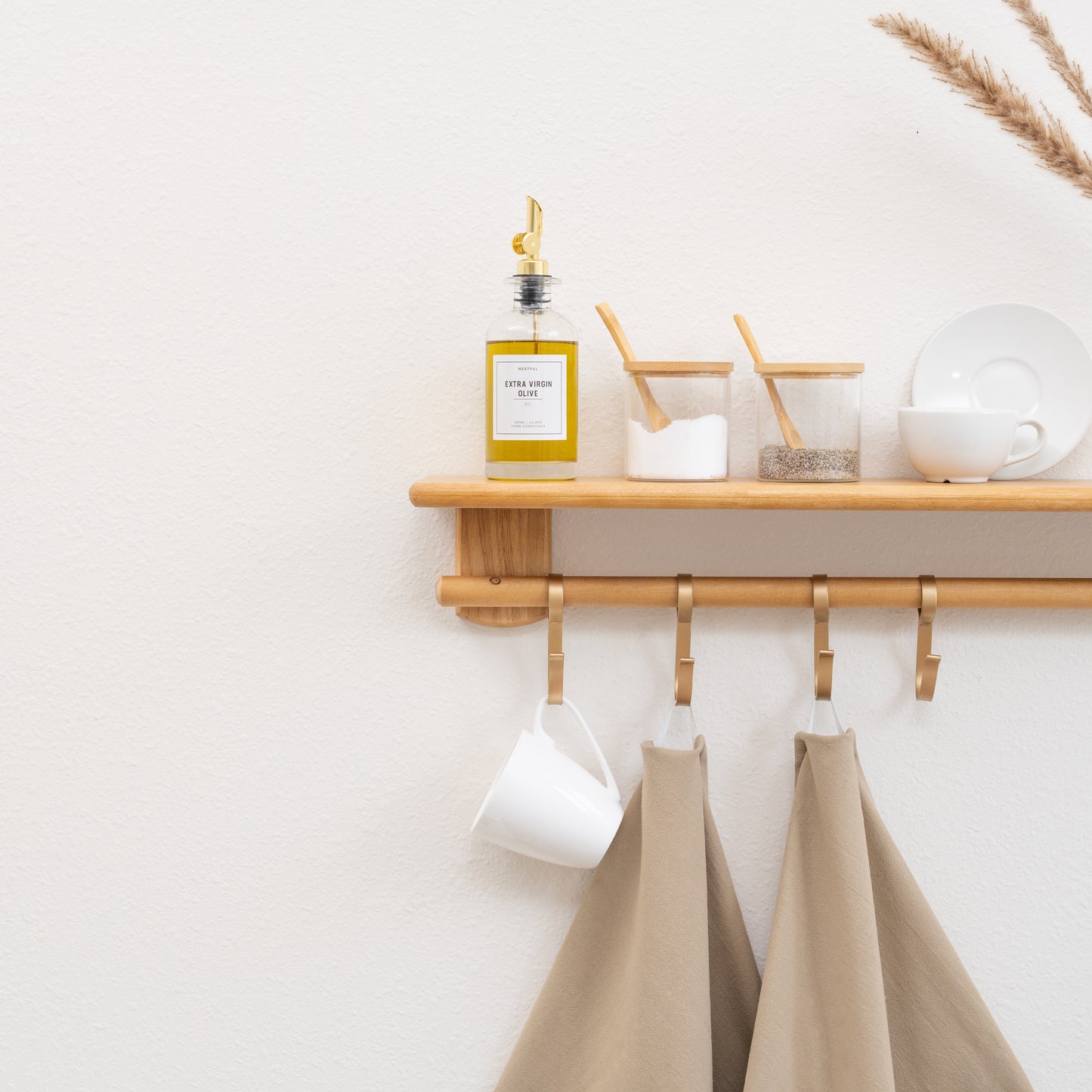
2 comments
Great article! The only thing I feel is important to add is that you should never wash your food safe cloth with laundry detergent or softener. Commercial detergent is full of chemicals and fragrance that will transfer to your food. First I treat stains with peroxide or baking soda. Then I use salt and vinegar in my washer and afterwards, if I’m using the cloth for food, I boil them in a large pot of water to sanitize. They will shrink when you boil them, so be sure to get a larger cloth than you need!
Do you use flour, sack towels for hand towels in the bathroom?